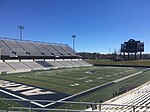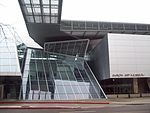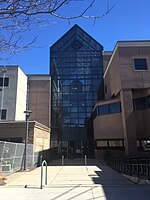Skeeles Field

Skeeles Field, formerly known as Lee R. Jackson Baseball Field, is a baseball venue on the campus of the University of Akron in Akron, Ohio, United States. It is the home field of the Akron Zips baseball team and part of the 23-acre (9.3 ha) Lee R. Jackson Athletic Complex which also includes the varsity softball field, track and field complex, a football practice field, and FirstEnergy Stadium–Cub Cadet Field. The facility was built in 1967, moved to its current site in 1972, and has a listed seating capacity of 1,500 spectators. The venue is named for Bill and Mary Skeeles, with Bill being a 1977 Akron alumnus and former Zips baseball player. The Skeeles donated $1 million in 2019 towards a $2 million, two-phase project to upgrade the facility as part of the return of the Zips baseball program in 2020 after the program was eliminated in 2015. The complex is named for Lee R. Jackson, former chairman of the university's board of directors. The baseball field was also named for Jackson until 2020.
Excerpt from the Wikipedia article Skeeles Field (License: CC BY-SA 3.0, Authors, Images).Skeeles Field
East Exchange Street, Akron
Geographical coordinates (GPS) Address Nearby Places Show on map
Geographical coordinates (GPS)
| Latitude | Longitude |
|---|---|
| N 41.073635 ° | E -81.511374 ° |
Address
East Exchange Street
44306 Akron
Ohio, United States
Open on Google Maps








